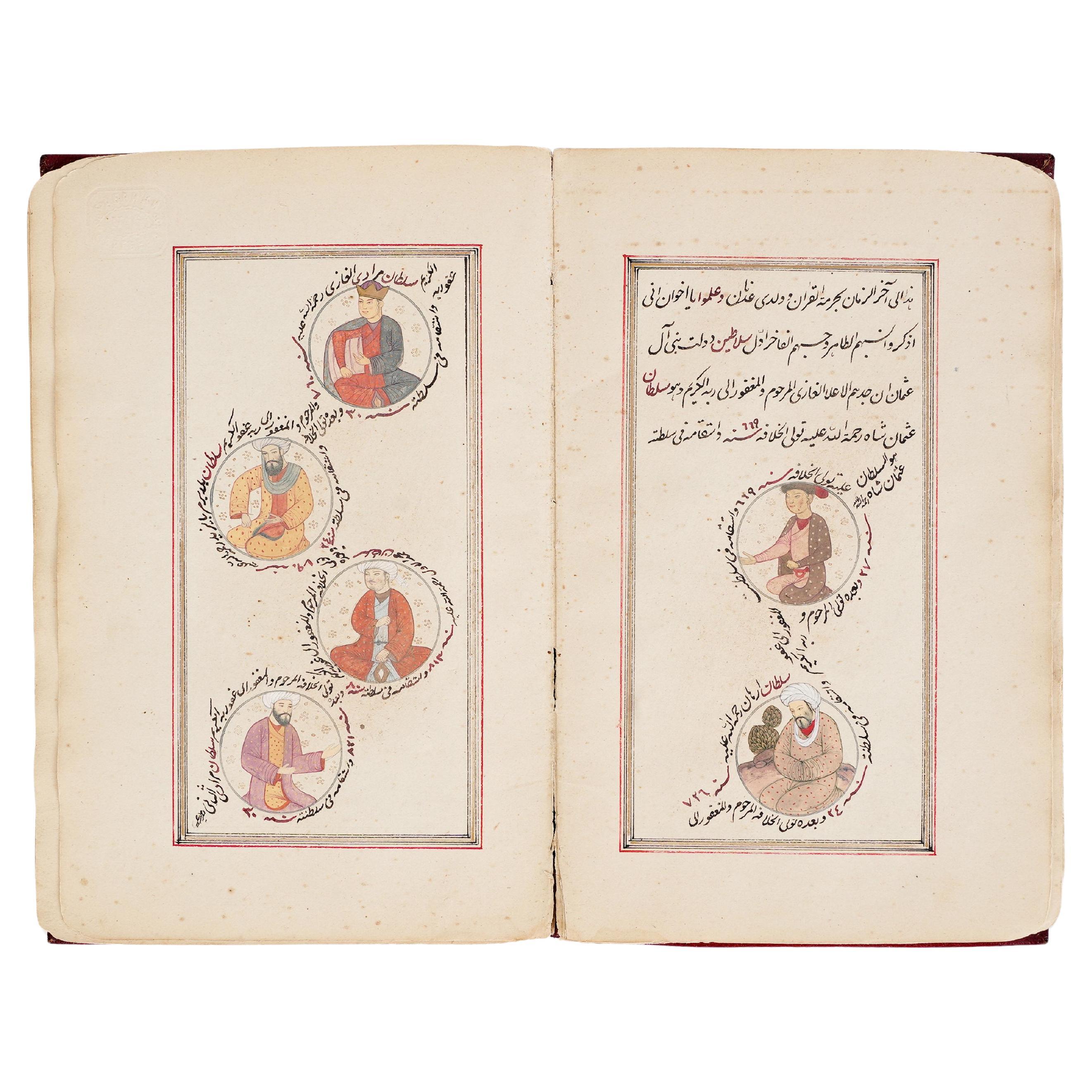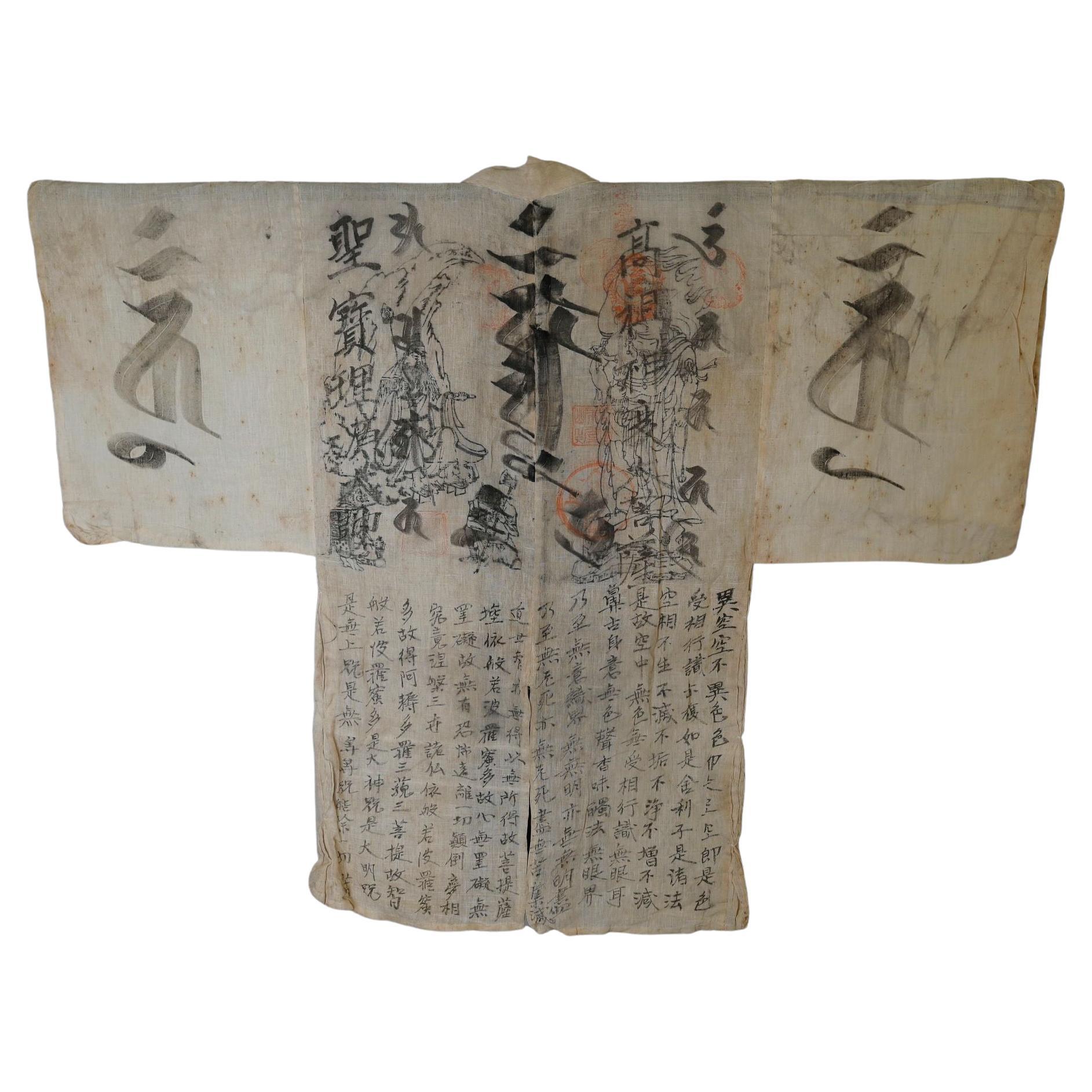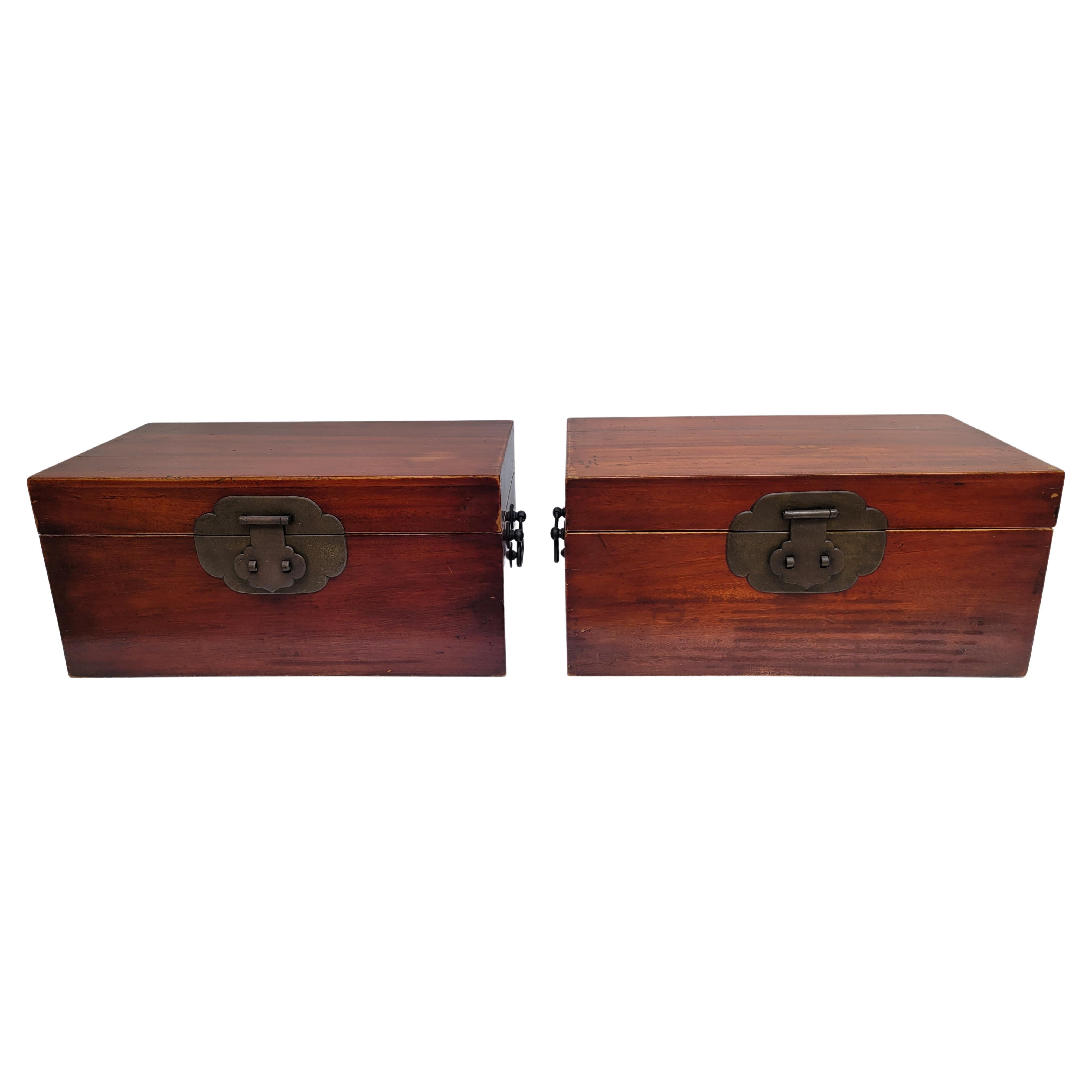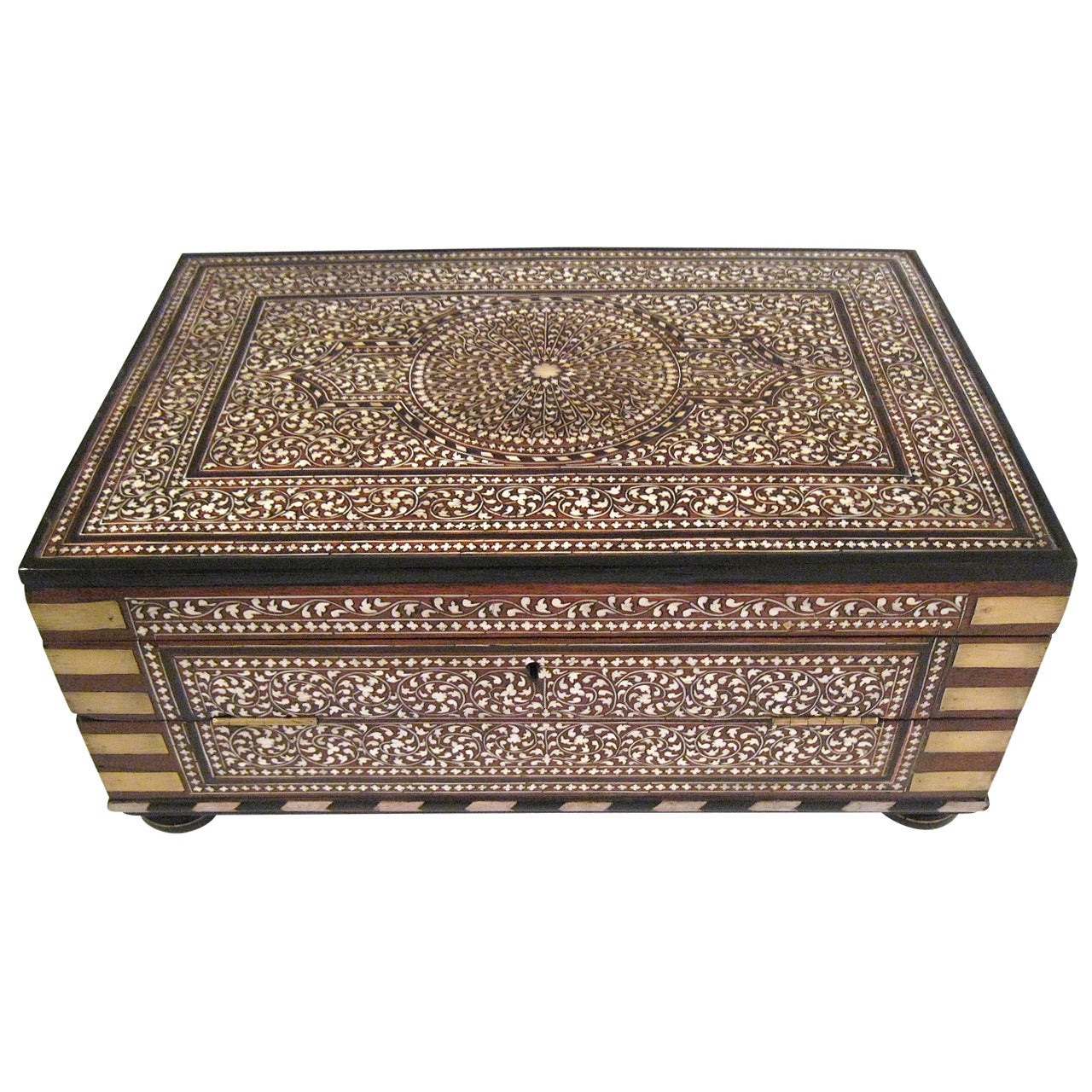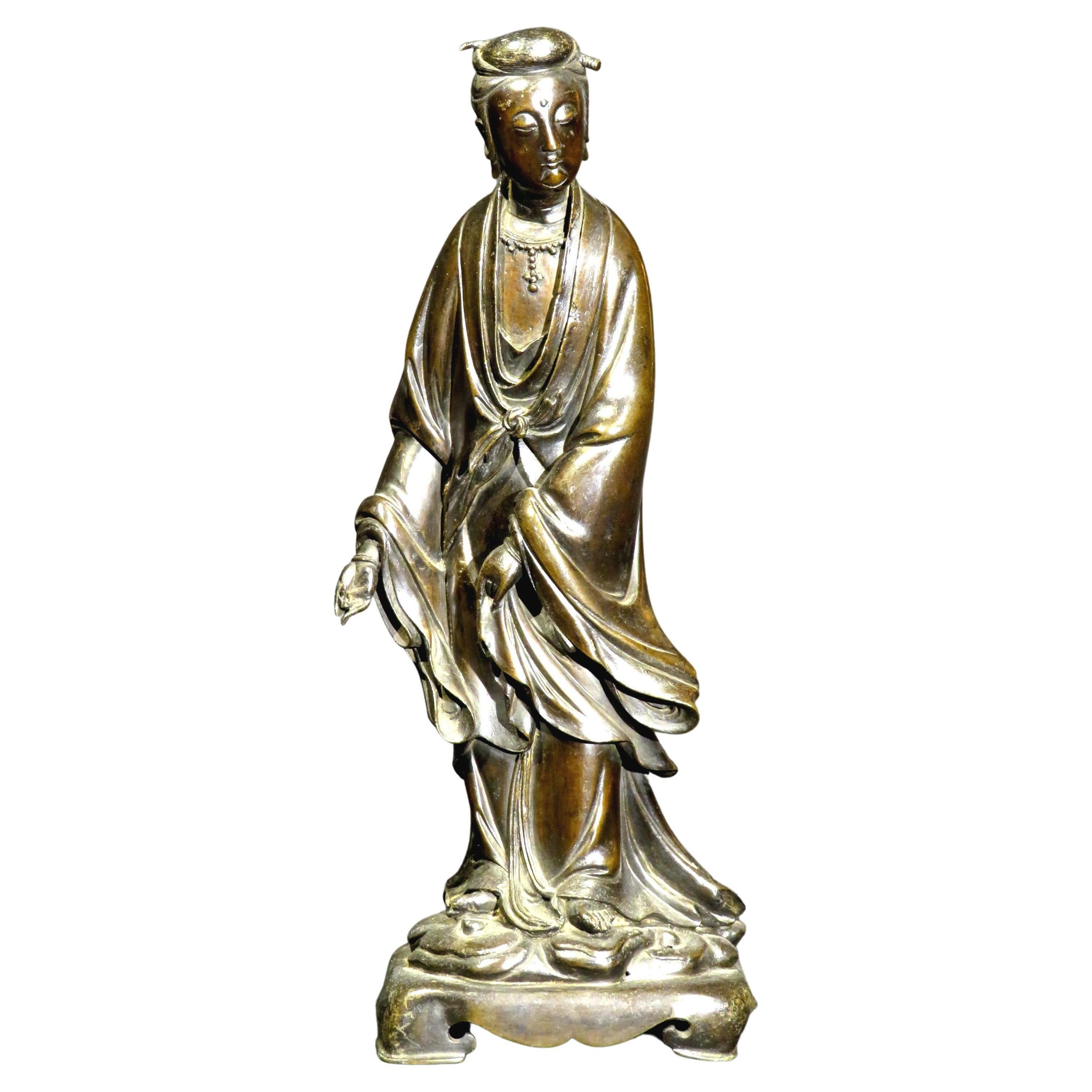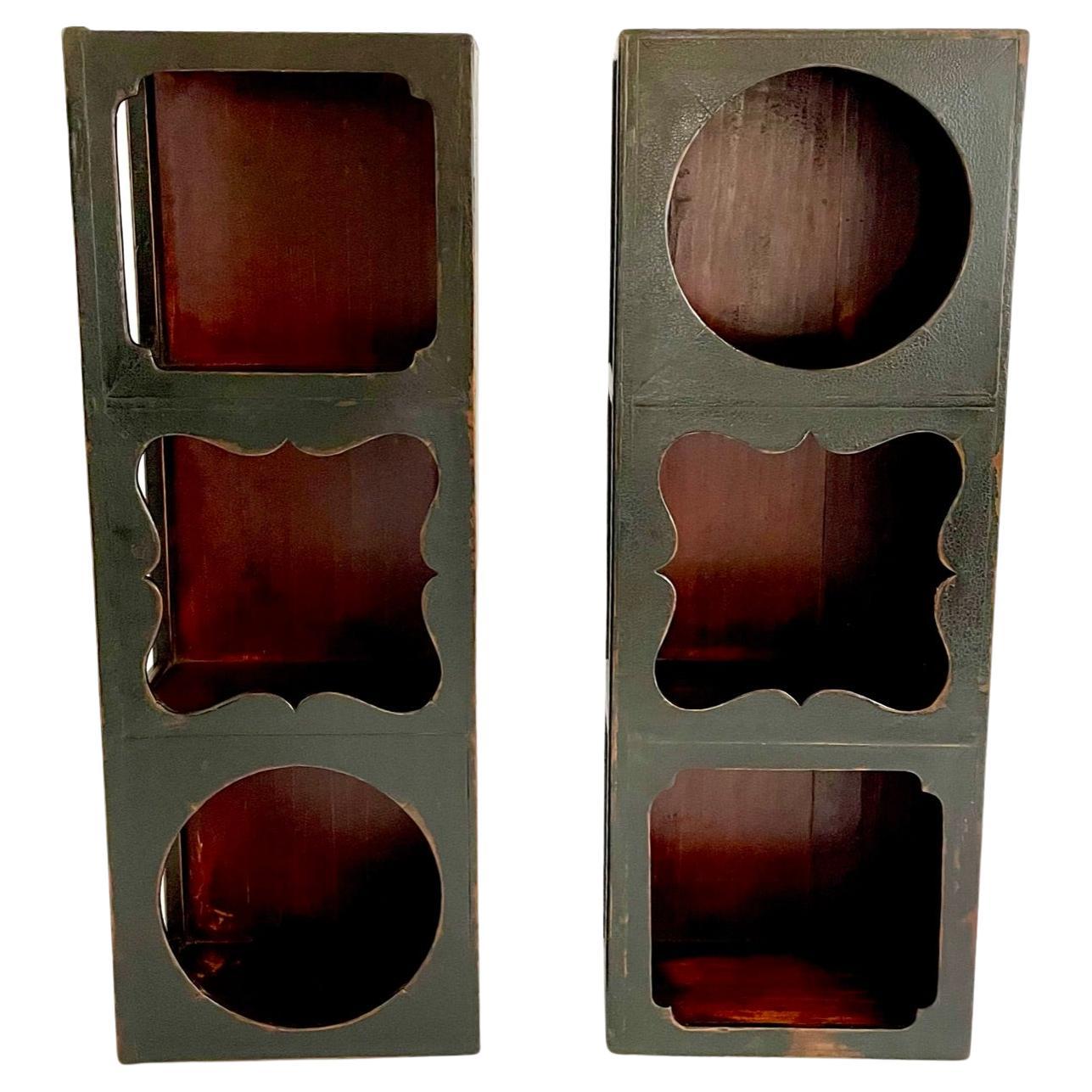Items Similar to 13th Century Gold Coin From The Ghurid Rulers Of India MU'IZZ AL-DIN MUHAMMAD
Want more images or videos?
Request additional images or videos from the seller
1 of 6
13th Century Gold Coin From The Ghurid Rulers Of India MU'IZZ AL-DIN MUHAMMAD
About the Item
Ghurid Rulers Of India, Mu'izz Al-Din Muhammad B. Sam (567-602h). Gold 10-Mithqals/Dinars, Balad Ghazna 601h. Obverse: In Field: La Ilaha Illa Allah | Muhammad Rasul Allah | Al-Nasir Li-Din Allah | Amir Al-Mu'minin; In Field (Above, And To Left And Right): Allah A'la; (Below): Ornament Of Two Intertwined Tendrils; In Margin: Qur'an Ix, 33. Reverse: In Field: Al Sultan Al-A'azam | Mu 'Izz Al-Dunya Wa | Al-Din Abu'l-Muzaffar | Muhammad Bin Sam; In Field (Above, And To Left And Right): Allah A'la; (Below): Ornament Of Two Intertwined Tendrils; In Margin: Mint And Date. Weight: 44.82g.
Published: The Shah Firzan Heritage Of Islamic Coins, P.55. Extremely Fine And Excessively Rare, Believed Unique. 'It Was, Of Course, In India That The Ghurid Legacy Was To Be The Most Lasting, For It Was The Turkish And Khalji Commanders Of Muʿizz-Al-Din Who Laid The Foundations Of The Delhi Sultanate...And Who Permanently Implanted Islam In Northern India.' - C. Edmund Bosworth, Encyclopaedia Iranica, Vol. X, Fasc. 6, P. 589. Originally A Dynasty Of Local Chieftains From Ghur In The Heart Of Present-Day Afghanistan, The Ghurids First Come Into Historical Focus During The First Decades Of The 5th/11th Century When Mahmud Of Ghazna And His Son Mas'ud Launched A Series Of Raids Into Their Territory. By The Beginning Of The 6th/12th Century It Was The Great Seljuqs Under Sanjar Who Had Become The Dominant Force In The Region, But The Defeat Of Sanjar In 548h, Combined With The Decline Of The Ghaznavids, Left A Power Vacuum In The Region Which The Ghurids Were Well-Placed To Fill. Mu'izz Al-Din Muhammad Was The Younger Brother Of Ghiyath Al-Din Muhammad, And Was About 14 Years Old When His Elder Brother Succeeded Sayf Al-Din Muhammad As Ghurid Sultan In 558h. Unlike Their Predecessors, Who Often Fought And Feuded Among Themselves, The Two Brothers Maintained A Successful And Harmonious Partnership Which Endured For Forty Years, Creating Together A Vast Empire Stretching From Northern India To The Margins Of The Caspian Sea. In 569h They Captured Ghazna, Which Now Became Mu'izz Al-Din's Seat, And From Where He Soon Turned His Attention To India. Mu'izz Al-Din's First Raids Took Him Over The Gumal Pass And Into The Punjab. He Captured Multan And Uch In 570h, And By The Late 570s Had Forced The Sumeras In Lower Sindh To Acknowledge Him As Their Overlord. Following A Less Successful Campaign Against Gujarat In The West, Mu'izz Al-Din Turned Next To Northern India, Eliminating The Last Of The Ghaznavids At Lahore In 582h. From Here He Continued Down The Ganges Valley And Twice Fought Prithviraja Iii, The Chahamana King Of Ajmer And Dehli, At Tarain (Now Taraori In Haryana). In The First Battle Of Tarain In 587h, Mu'izz Al-Din Himself Was Injured And Obliged To Retreat, But He Returned In The Following Year And Won An Overwhelming Victory On The Same Field After Surprising Prithviraja By Attacking Before Daybreak. Mu'izz Al-Din Proceeded To Occupy Ajmer Where He Swiftly Moved To Establish Islam, Replace Existing Temples With Mosques And Introducing Islamic Precepts And Legal Principles. Appointing A Local Ruler, Govindaraja, To Govern Ajmer For Him, Mu'izz Al-Din Soon Left India For Khurasan, Where He Rejoined Ghiyath Al-Din In His Struggle Against The Khwarezmshah. But His Mamluk Lieutenants Continued To Build On His Indian Conquests: While He Had No Sons Of His Own, Mu'izz Al-Din Treated His Mamluks As His Heirs, Giving Them Excellent Training Both As Soldiers And Administrators. Three In Particular Went On To Play Important Roles In The History Of India: Nasir Al-Din Qubacha, Who Became Ruler Of Multan, Muhammad Bakhtiyar Khalji, Who Founded The Sultanate Of Bengal, And Perhaps Above All Qutb Al-Din Aybak, Who Established The Sultanate Of Dehli. Ghiyath Al-Din Died In 599h, And Mu'izz Al-Din Succeeded Him As Sole Ghurid Sultan. He Continued To Enjoy Success In India, Where His Commander Muhammad Bakhtiyar Khalji Became The First Muslim Commander To Capture Bengal In The Year 601h, Striking Coins In Mu'izz Al-Din's Name To Mark This Great Victory. With The Whole Of Hindustan Now Under His Control, Mu'izz Al-Din Reportedly Received The New Title Al-Sultan Al-Sharq, 'Sultan Of The East.' But His Final Years Were Marked By Disaster In The West, Where The Ghorids Suffered A Disastrous Defeat At The Hands Of The Khwarezmshahs. Almost The Whole Of Khurasan Was Lost, But Mu'izz Al-Din Himself Managed To Reach Ghur Where He Began To Regroup And Make Preparations For A Counter-Attack. Before This Could Be Launched, However, He Was Summoned To India To Suppress A Revolt. With His Indian Domains Pacified Once More And In The Capable Hands Of Qutb Al-Din Aybak, Mu'izz Al-Din Set Out For Ghazna, But The Man Who Had Changed The Course Of Indian History Was Assassinated In The Punjab In 602h. This Magnificent Gold Coin, Carefully Struck To The Weight Of 10-Mithqals, Is The Only Such Piece Known Bearing The Name Of Mu'izz Al-Din Alone. Similar 10-Mithqal Medallions, Struck At Ghazna In The Joint Names Of Mu'izz And Ghiyath Al-Din, Are Known For The Years 597h And 598h. These Coins Share An Obverse Die, Which Strongly Suggests That Only A Small Number Can Ever Have Been Made, Especially In View Of The Pressures To Which That Single Die Must Have Been Subjected In Striking Such Large And Handsome Coins. While There Is Nothing Explicit In Their Legends, A Connection Between These Special Coins And Mu'izz Al-Din's Indian Victories Has Long Been Proposed – The Cataloguer Of The Specimen Dated 598h Offered By Spink In 1984 (Spink Octagon Issue 40, No. 41) Suggested That It Was 'Probably Specially Struck For A Ceremony Commemorating The Tenth Anniversary Of The Muslim Conquest Of India' – And The Coin Offered Here, Struck In The Year When The Whole Of Hindustan Came Under Mu'izz Al-Din's Sway, Would Certainly Have Been A Fitting Acknowledgement Of His Achievements.
- Dimensions:Height: 0.04 in (1 mm)Diameter: 1.78 in (4.5 cm)
- Materials and Techniques:
- Place of Origin:
- Period:
- Date of Manufacture:13th Century
- Condition:
- Seller Location:London, GB
- Reference Number:
About the Seller
5.0
Vetted Seller
These experienced sellers undergo a comprehensive evaluation by our team of in-house experts.
Established in 1989
1stDibs seller since 2021
20 sales on 1stDibs
Typical response time: <1 hour
Associations
LAPADA - The Association of Arts & Antiques Dealers
- ShippingRetrieving quote...Ships From: London, United Kingdom
- Return PolicyA return for this item may be initiated within 14 days of delivery.
More From This SellerView All
- 18th Century Book Depicting The Descendants Of The Rulers Of The Ottoman EmpireLocated in London, GBA Rare Ottoman Book Depicting The Descendants Of The Rulers Of The Ottoman Empire Till Sultan Abdul Majid, Signed Mohammed Afandi Almuradi Alnagshabandi, 18th Century.Category
Antique 18th Century Turkish Scholar's Objects
MaterialsPaper
- Large Almohad Water Jar, Spain, 12th/13th CenturyLocated in London, GBA fine green glazed "Alhambra" vase, Seville, Andalusia, 12th/13th century, classic form, very heavily potted rising through a tall rounded conical form to the pronounced rounded sho...Category
Antique 15th Century and Earlier Spanish Vases
MaterialsClay
- 19th Century Ottoman Watercolour Painting Of Al-Aqsa MosqueLocated in London, GBA distinguished 19th-century painting featuring Al-Aqsa Mosque, accompanied by a side column adorned with verses from Surah Al-Isra and Hadith. These verses recount the miraculous ni...Category
Antique 19th Century Turkish Paintings
MaterialsPaint
- Pair of Mughal Wooden Columns, India, 19th CenturyLocated in London, GBA Pair of 19th century Indian columns in European style, with removable base and crown.Category
Antique Late 19th Century Indian Furniture
MaterialsWood
- Large 19th Century Sandalwood Jewellery Box, South IndiaLocated in London, GBThe dense carving of this 19th century South Indian sandalwood jewellery box is so lively and animated.Category
Antique Late 19th Century Indian Jewelry Boxes
MaterialsSandalwood
- Long Silk and Metal Thread Textile, India, 19th CenturyLocated in London, GBA fine silk and metal thread textile on a red background with various geometrical designs.Category
Antique 19th Century Indian Indian Rugs
MaterialsSilk
You May Also Like
- 19th Century Rare Japanese Pilgrims Jacket with Text of the Heart Sutra and PilgLocated in Fukuoka, JPThis pilgrim's jacket is a rare and valuable artefact that documents a journey of spiritual and physical endurance. It is believed to have been worn by a pilgrim who travelled to sit...Category
Antique 19th Century Japanese Scholar's Objects
MaterialsCotton
- 19th Century Pair of Camphor BoxesLocated in Santa Monica, CAThis pair of camphor storage boxes has its original lacquer finish. The construction is of standard mortise and tenon joints.Category
Antique 19th Century Chinese Scholar's Objects
MaterialsHardwood
- Anglo-Indian Rosewood Writing Desk, India, circa 1825Located in Philadelphia, PAElegant and finely crafted rosewood and ivory inlay traveller's writing desk from the late Mughal period of British India (circa 1825), on low bun feet. In excellent condition, with ...Category
Antique 1820s Indian Islamic Scholar's Objects
MaterialsIvory, Rosewood
- A Finely Cast & Patinated Standing Bronze Figure of Guanyin, 18th / 19th CenturyLocated in Ottawa, OntarioThe finely cast bronze figure of Guanyin - Bodhisattva Goddess of Compassion, Kindness & Mercy. Shown standing atop a naturalistic mound on a scrolled rectangular base, wearing an o...Category
Antique 1790s Chinese Qing Sculptures and Carvings
MaterialsBronze
- Pair of 19th Century Black Lacquered Chinese Scholar ShelvesLocated in Atlanta, GAThis beautiful pair of unusual Chinese scholar shelves is finely crafted with Chinese Northern Elmwood and finished with a black lacquer. The w...Category
Antique Mid-19th Century Chinese Scholar's Objects
MaterialsElm, Lacquer
- 19th Century Chinese InkstoneLocated in Vosselaar, BEA 19th century Chinese Inkstone. The upper part decorated with floral lotus motives serving as water basin. The Inkstone was one of the four principal ele...Category
Antique Early 19th Century Chinese Scholar's Objects
MaterialsStone
